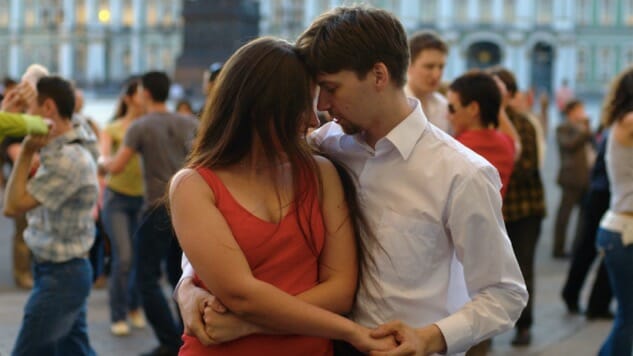
Wealth, like oxygen, can get thinner at altitude. The distribution of riches in big Colombian cities, for example, has been a surprise to me. I don’t mean economically. I mean topographically.
Basically, the higher you rise, the lower you rent.
Climb a hill in Los Angeles or Boston or even Birmingham, and houses get posher, lawns greener, gates more imposing. The wealthy live high on the hog, and high in the hills.
On a promontory in Bogotá or Medellin, though, dwellings get smaller, poorer, bleaker. High in the nosebleed section, people live in shacks of cardboard or mismatched planks with a rusted tin roof held down by a few stones. In such poor barrios, the criminal networks of the notorious drug lord Pablo Escobar took root and spread, back in the day.
It happens elsewhere in Latin America. The favelas in the heights over Rio de Janeiro and slums in the peaks around Caracas, in Venezuela, have perpetuated poverty and incubated gangs for generations.
In some places, though, churches claim the high ground. Catholics who founded Colombian settlements often liked to build churches as close to heaven as they could.
They put one great shrine atop Monserrate, the mountain that dominates Bogotá’s city center. Built in the 1600s and dedicated to El Señor Caido, The Fallen Lord, Monserrate Sanctuary occupies a site previously sacred to the indigenous Muisca people. Another shrine, The Sanctuary of Our Lady of Guadalupe, tops a neighboring peak. It too symbolizes lofty aspirations and high hopes, two miles above sea level and 1,000 feet over downtown Bogotá.
Another famous church tops a prominent hill in Cali, Colombia’s third-largest city. Adela and I made a visit to the Chapel of San Antonio last February. We approached on foot at twilight, the 2 million lights of Cali, one for each soul in the city, flickering on as we hiked narrow streets through the bohemian section.
We discovered One Way Pizza on a one-way street. Lured by a sound system playing R.E.M., we took outdoor seats with a view of the grounds of San Antonio Chapel, which welcomes thousands of tourists annually. Pablo, the proprietor, good with his English and better with hawking his kitchen, talked us into micheladas and then a smoking-hot pie with artichokes, olives, and mushrooms. A few locals joined us on the terrace—always a good sign.
We studied the 270-year-old place of worship through pine trees that rose on the nearby hillside, our next and final ascent. After the meal, we picked our way along a stony path to the cobbled plaza fronting the chapel. Overbright flood lighting made it feel like a movie set, the crews busy making ready for a shoot.
San Antonio didn’t look much different from a hundred other old churches in Colombia. It was stucco, some brick, old wood beams in walls and overhead, plain except for a few shiny metals on altars and crosses and such. But San Antonio has a special allure for Colombians – believers swear that San Antonio and the Holy Virgin will team up here to help a lovelorn soul find a mate. Think of it as a safe place for Catholics who mistrust online dating services.
However it works, it works. A happy crowd hung out on the early Saturday night we visited. Food vendors roasted ears of corn, and we saw kids blowing fat, wobbly soap bubbles with giant wands. Teen-agers laughed and flirted and chased each other around the plaza. Now and then a bell clanged somewhere below the mountaintop, counting vespers.
In Cali, after visitors put in their orders for good and faithful mates on the little holy hilltop, there’s one more destination, one more experience. Salsa. The rumba.
Salsa? Rumba? Hold on, good reader. Before you abandon this Paste web page and scuttle off to find a glossary of Spanish terms, let me explain.
Salsa in Colombia is music, an Afro-Cuban dance of lively rhythms that entered the nation through Barranquilla or Cartagena, the major ports, then spread faster than a mosquito-borne fever through this lively nation. Cali is considered the capital of the kingdom of salsa.
As a side note, a salsa for dipping corn chips does not exist here. That substance is called aji picante, with an emphasis on the picante. Some aji recipes will Chernobyl your tongue. It will turn your precious organ of speech and taste to flopping red magma. Hours may be needed to recover an ability to speak, or stop weeping.
And rumba? It’s a very important word in Colombia. Colombians go to the rumbeadero, and they irse de rumba all night. They may rumba to a DJ, a live band, or Spotify. But Colombians all rumba.
And why does the rumba matter? Because hips don’t lie.
Adela and her girlfriends have confirmed, one after the other, that once a Colombian woman receives the heavenly gift of a boyfriend, through the graces of San Antonio or sheer luck, she takes him for a test drive.
That’s the rumba.
It’s an audition for amor. If the caballero can’t dance, then guess what? He probably can’t do at least one other really, really important thing. I’ll let you do the guessing.
On our Saturday night in Cali, Adela and I strolled down hand-in-hand from the heights of San Antonio Chapel and toward the salsa clubs. The rumba lay ahead.
We danced till the wee hours in crowded, hot, lively Zaperoco, one of the best-known salsa spots in Cali. The club smelled of cocktails and pheromones. The music climbed heights. The high and the low, the sinner and the saved, gringo and caleño, the riverside rich and the mountaintop mendicant … who knew the difference here? Who cared?
The rumba went on, and the world danced. Long after midnight, Adela and I made it back to our hotel soaking wet. It wasn’t even raining.
Image: Anton Kudris, CC-BY
Charles McNair is Paste’s Books editor emeritus. He served the magazine as writer, critic and editor from 2005-2015.